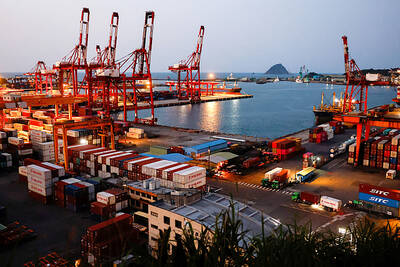It seems increasingly apparent that the secret to success is to have a successful parent. Consider some prominent examples: George H.W. Bush and George W. Bush; Bobby Bonds and Barry Bonds; Henry Fonda and Jane Fonda; Estee Lauder and Ronald Lauder; Julio Iglesias and Enrique Iglesias; Sam Walton and Jim, John, S. Robson and Alice Walton.
As more recent and better data have become available, economists have marked up their estimate of the impact of parents' socioeconomic status on their children's likelihood of economic success.
It turns out that the famous line attributed to Andrew Carnegie -- "from shirt-sleeves to shirt-sleeves in three generations" -- is an understatement. Five or six generations are probably required, on average, to erase the advantages or disadvantages of one's economic origins.
This represents a marked departure from past thinking. In the 1980s, when Gary Becker of the University of Chicago pioneered the economic theory of intergenerational transmission of economic status, it was believed that the correlation between a father's and son's income was only around 0.15 -- less than half the correlation between fathers' and sons' heights.
The early studies suggested that if a father's income was twice the average, his son's expected income would be 15 percent above average, and his grandson's just 2 percent above average. This is fast "regression to the mean," a concept Francis Galton used to describe the progression of offspring toward the average height.
Landmark studies published by Gary Solon of the University of Michigan and David Zimmerman of Williams College in The American Economic Review a decade ago, however, led economists to revise substantially upward the estimate of the similarity of fathers' and sons' incomes. They noted that income fluctuated for idiosyncratic reasons from year to year -- an employee could lose a job, for example -- so estimates that depended on a single year were based on "noisy" data. Also, the samples previously analyzed represented only a narrow slice of the population at different points in individual careers. These factors caused the correlation in annual incomes to understate the correlation in "lifetime" incomes.
Averaging earnings over five years produced a correlation of around 0.40 for fathers' and sons' earnings -- the same as the correlation between their heights. If people's incomes were represented by their heights, the similarity in income between generations would resemble the similarity observed in the heights of fathers and sons.
New studies by Bhashkar Mazumder of the Federal Reserve Bank of Chicago suggest that the similarity in income is even greater. Using Social Security records, he averaged fathers' earnings over 16 years (1970 through 1985) and sons' earnings over four years (1995 through 1998), and found that around 65 percent of the earnings advantage of fathers was transmitted to sons. The wider window provides a better reflection of lifetime earnings.
The relationship between fathers' and daughters' earnings was just as strong.
So that grandson (or granddaughter) mentioned previously could expect to earn 42 percent more than average. After five generations, the earnings advantage would still be 12 percent.
Furthermore, the degree of persistence across generations is strong for both rich and poor. Thomas Hertz of American University finds that a child born in the bottom 10 percent of families ranked by income has a 31 percent chance of ending up there as an adult and a 51 percent chance of ending up in the bottom 20 percent, while one born in the top 10 percent has a 30 percent chance of staying there and a 43 percent chance of being in the top 20 percent.
Why is there such a strong connection between parents' socioeconomic status and their children's? A large part of the answer involves intergenerational transmission of cognitive ability and educational level. But these factors can "explain at most three-fifths of the intergenerational transmission of economic status," Samuel Bowles and Herbert Gintis of the University of Massachusetts wrote in the latest issue of The Journal of Economic Perspectives. They suggest that the intergenerational transmission of race, geographical location, height, beauty, health status and personality also play a significant role.

US President Donald Trump yesterday announced sweeping "reciprocal tariffs" on US trading partners, including a 32 percent tax on goods from Taiwan that is set to take effect on Wednesday. At a Rose Garden event, Trump declared a 10 percent baseline tax on imports from all countries, with the White House saying it would take effect on Saturday. Countries with larger trade surpluses with the US would face higher duties beginning on Wednesday, including Taiwan (32 percent), China (34 percent), Japan (24 percent), South Korea (25 percent), Vietnam (46 percent) and Thailand (36 percent). Canada and Mexico, the two largest US trading

China's military today said it began joint army, navy and rocket force exercises around Taiwan to "serve as a stern warning and powerful deterrent against Taiwanese independence," calling President William Lai (賴清德) a "parasite." The exercises come after Lai called Beijing a "foreign hostile force" last month. More than 10 Chinese military ships approached close to Taiwan's 24 nautical mile (44.4km) contiguous zone this morning and Taiwan sent its own warships to respond, two senior Taiwanese officials said. Taiwan has not yet detected any live fire by the Chinese military so far, one of the officials said. The drills took place after US Secretary

CHIP EXCEPTION: An official said that an exception for Taiwanese semiconductors would have a limited effect, as most are packaged in third nations before being sold The Executive Yuan yesterday decried US President Donald Trump’s 32 percent tariff on Taiwanese goods announced hours earlier as “unfair,” saying it would lodge a representation with Washington. The Cabinet in a statement described the pledged US tariffs, expected to take effect on Wednesday next week, as “deeply unreasonable” and “highly regrettable.” Cabinet spokeswoman Michelle Lee (李慧芝) said that the government would “lodge a solemn representation” with the US Trade Representative and continue negotiating with Washington to “ensure the interests of our nation and industries.” Trump at a news conference in Washington on Wednesday announced a 10 percent baseline tariff on most goods

‘SPECIAL CHANNEL’: Taipei’s most important tasks are to stabilize industries affected by Trump’s trade tariffs and keep negotiations with Washington open, a source said National Security Council Secretary-General Joseph Wu (吳釗燮) arrived in the US for talks with US President Donald Trump’s administration, a source familiar with the matter said on Friday. Wu was leading a delegation for a meeting known as the “special channel,” the Financial Times reported earlier. It marked Trump’s first use of the channel since returning to the White House on Jan. 20. Citing a source familiar with the matter, the Financial Times reported that Minister of Foreign Affairs Lin Chia-lung (林佳龍) was also a part of the delegation. The visit came days after China concluded war games around Taiwan and amid Trump’s